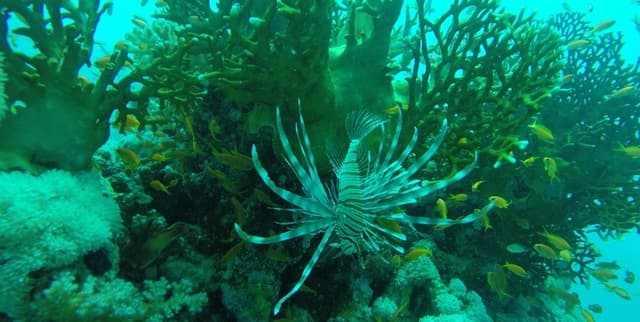Reef Ecological Dynamics Data
Data Science and Analytics
Tags and Keywords
Trusted By




"No reviews yet"
Free
About
Presents an ecological assessment of the Alacranes Reef and Bajos del Norte Reef, situated within Del Norte County. The focus of this data is to reveal the biodiversity, habitat health, and underwater ecosystem dynamics of these marine environments. Information was gathered using meticulous field survey techniques involving SCUBA diving. The dataset includes valuable details on fish abundance, biomass estimates, and the cover of invertebrates and macroalgae, offering crucial insights into the overall ecological balance and health of the reefs.
Columns
The dataset includes detailed entries covering numerous aspects of the collected observations:
- label, year, month, day: Temporal and site identifiers for the observation record.
- region, island, side, reef, id_reef: Specific geographic identifiers detailing location, orientation (e.g., Windward, Leeward), and specific reef names.
- protection_status: Designation of the area (e.g., MPA - Marine Protected Area, NTZ - No-Take Zone, OA - Open Access).
- latitude, longitude: Geographical coordinates of the transect.
- habitat, transect, area: Description of the habitat type (e.g., Coral) and the specific parameters of the survey effort.
- phylum, taxa1, taxa2, taxa3, family: Hierarchical taxonomic classifications.
- trophic_group, trophic_level, functional_groups: Ecological roles and feeding habits (e.g., Zooplanktivore, Herbivore).
- species: Scientific name of the observed organism.
- quantity, size, biomass: Metrics relating to species population (count), average size, and estimated biomass.
Distribution
The data files associated with this product typically include records in CSV format, such as
fish_data.csv and invertebrate_algae_data.csv. The structure is based on individual field observations collected via underwater transects. The specific number of records or rows is not currently available, but the file structure permits analysis of species distribution and biomass estimation across designated survey areas.Usage
This data is a vital resource for researchers, ecologists, and policymakers focused on marine conservation. Ideal applications include studying aquatic ecology, monitoring the effectiveness of established conservation zones (MPA/NTZ), and analysing the interplay between various organisms within delicate reef environments. Users can leverage the data to calculate average fish biomass, compare fish populations across different habitats, and track the distribution of specific trophic groups.
Coverage
The geographic scope covers Del Norte County, focusing specifically on two key locations: Alacranes Reef and Bajos del Norte Reef (often referred to collectively as Scorpion Reef). The temporal scope of the observations within the sampled data focuses on surveys conducted during August 2019. Coverage includes detailed geographical coordinates and notes on the protection status of various sub-regions.
License
CC0: Public Domain
Who Can Use It
Intended users include Academic Researchers conducting studies on fish ecology and population dynamics; Marine Ecologists assessing reef health and tracking biodiversity metrics; and Government Policymakers utilizing the findings to develop and evaluate marine conservation strategies and regulations.
Dataset Name Suggestions
- Reef Ecological Dynamics Data
- Del Norte Reef Biodiversity Survey
- Alacranes and Bajos del Norte Ecosystem Metrics
- 2019 Tropical Reef Assessment
Attributes
Original Data Source: Reef Ecological Dynamics Data
Loading...
